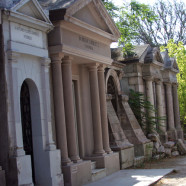
I was ready. I was so very ready to love Santiago. Instead, I found myself comparing it to Lima, and Santiago’s smog and traffic could not compare to the rush of life and history of the Peruvian capitol. I did find a saving grace; the largest (and tallest) graveyard I have ever set foot in.
I think there is something intriguing about everywhere in the world. Every city, town, village, forest, desert.. Sometimes it just takes a little longer to find it. We landed in Santiago, and as I do, I routined into a quick airport washroom change into summer clothes and a generous layer of SPF 50. With haste and just enough suspicion on my face to look a little less like a dopey tourist I located a quick registered shared ride to the hostel for Dave and I with some snap price comparisons and not much fuss.
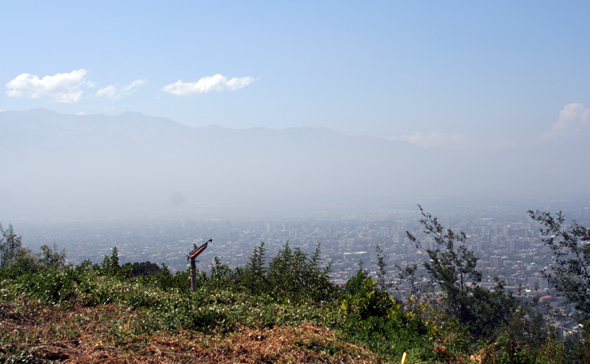
A view of somberly smoggy Santiago from the top of Cerro San Cristobal, Santiago’s largest greenspace.
Santiago and I got off on the wrong foot. We landed on a Sunday, and despite being a large cosmopolitan city, Santiago on a Sunday is practically vacant. Even worse apparently is Santiago on a Sunday in the summer; when residents flee to cooler vacation destinations. Throughout our days in Chile’s largest city (home to approx. 5.5 million people) I found many things closed. The Museo de la Moda, for example, which is a fashion museum that boasts an impressive collection that includes pieces such as John Lennon’s military jacket and Madonna’s cone bra. According to the website there was an 80’s exhibit there at the time. According to the security guards at the front door, it was closed for three months to undergo renovations.
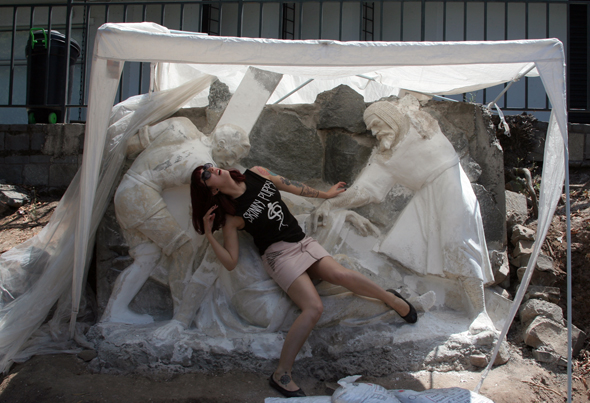
Way to amuse yourself in a city where everything is closed or under construction #63: Engage in borderline offensive posing with religious art likening yourself to a beloved deity.
My passion for the macabre was enlivened in Santiago when I set foot in a walled in city of the dead: Santiago’s giant central cemetery. Cementerio General de Santiago is the final rotting place of approximately two million corpses and counting. It is large. It is large enough to have several expansive neighbourhoods of every economic class. There are apartment-style graves stacked about eight bodies high dominating many neighbourhoods, sometimes with staircases and balconies to get you to the top level. Downstairs leading below the walkways were ditches lined with walls another four bodies deep.
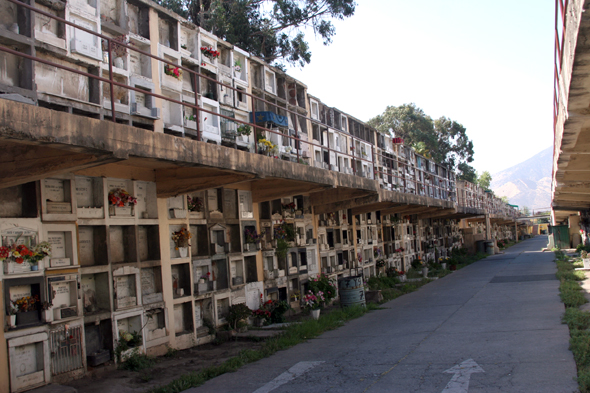
Look again; those aren’t apartment buildings. Those are two stories of dead people, and there are whole neighbourhoods of them.
The rich neighbourhood houses entire corpse families in crypts more spacious than my apartment. The opulently wealthy crypts, the ones I can only assume house the lesser gods, are larger than any house I have ever lived in with my entire family, and many are fashioned like extravagant palaces or dwarf cathedrals. I kept looking for colonies of homeless people or little teenage goths who must be hiding somewhere in this city of the dead, but all was quiet besides the lone dogs surveying the grounds.
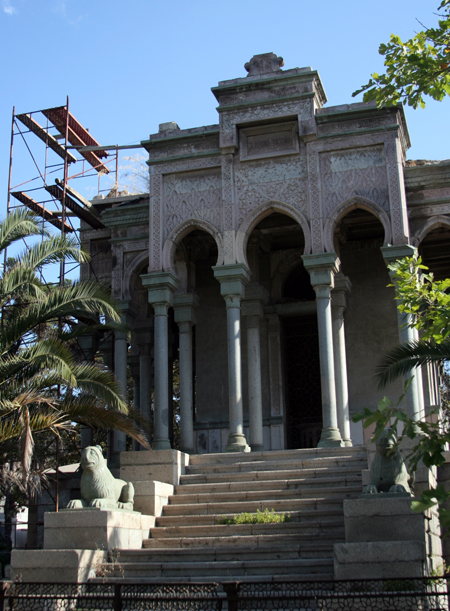
If there was a contest going on who can waste the most money on the future of their rotting remains, this would be a clear contender.
While most mausoleums are quiet and untouched by nature, here and there and suddenly with drama, there those that have thick serrated gashes and collapsed walls from earthquake damage. Part of the architectural newness of Santiago can be credited to it sitting at the convergence of the Nazca and South American tectonic plates, at a location where they converge at a rate of eighty millimeters (about three inches) a year. The region has been a hotspot for major earthquakes for the last 500 million years, the same process that created the Andes. Much of the damage seen at the cemetery was due to a massive earthquake in 2010. Despite my best efforts, there were no bones, flesh, or even stray teeth to be seen, even in the most disrupted of all structures.
Like so many other places, the Cementerio General de Santiago is home to many stray dogs, all of which are quite friendly. Our friend, Buckle Ramirez (we named him after our favorite headstone) decided to show us around after Dave sat down to scratch behind his ears. By the guilt-laden list of reasons Dave started naming of why he wouldn’t be able to keep him, I could tell Dave was just as concerned as I was that he would try and follow us home; yet as soon as we neared the cemetery gates to leave he was nowhere to be found.




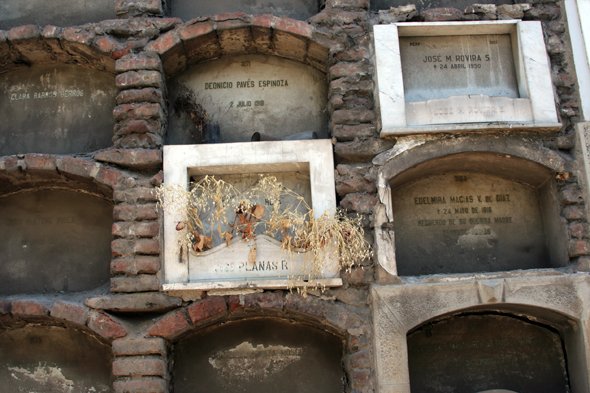
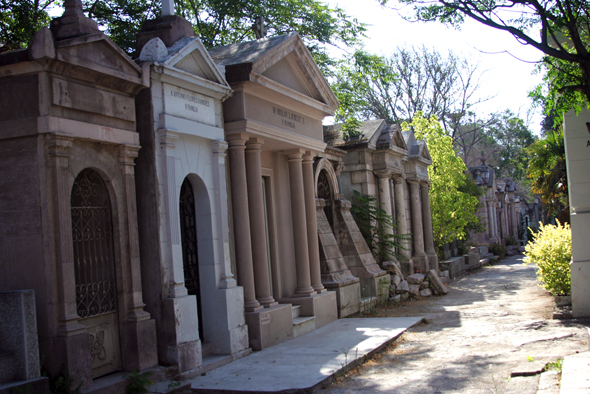
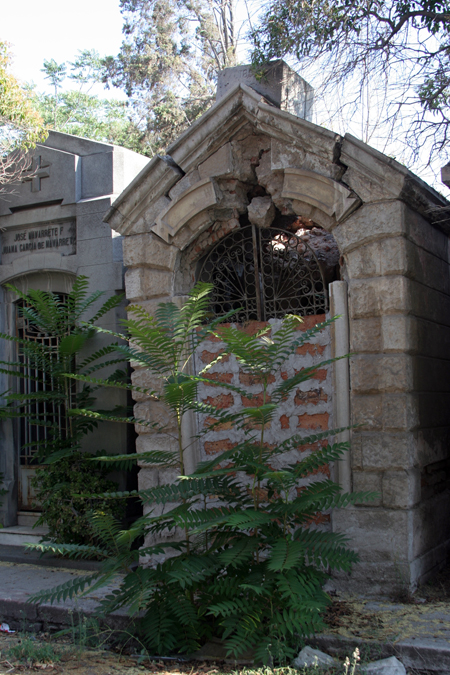
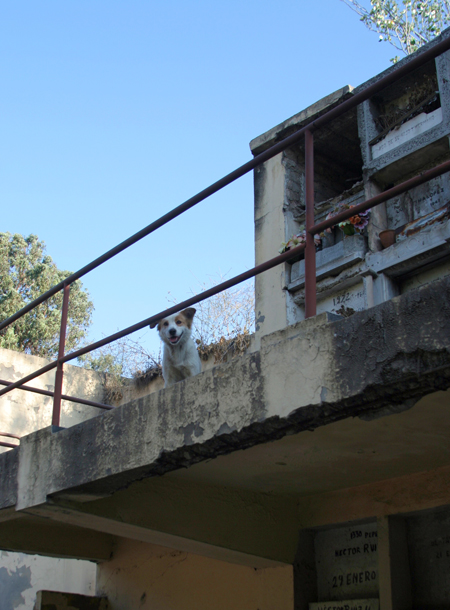
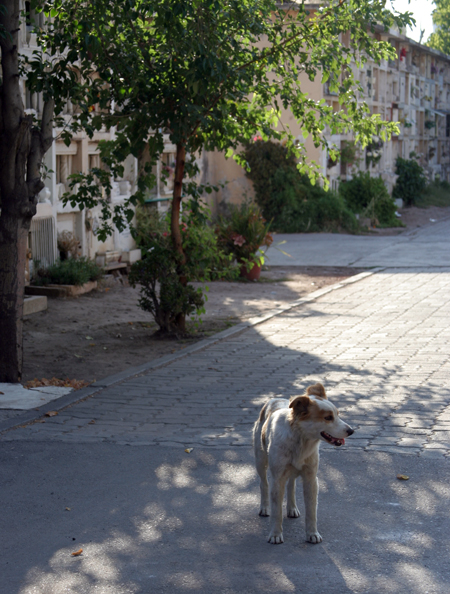
Recent Comments